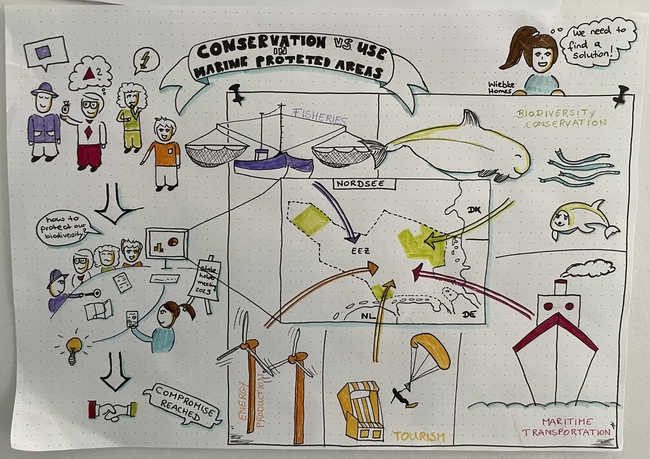DAM research mission ‘sustainMare’
Protecting the oceans and using them sustainably is the goal of the research mission ‘sustainMare’ by the German Marine Research Alliance (DAM). The ZMT is part of the CREATE project, which in December 2024 was extended for another three years. The focus now is on innovation in marine monitoring, marine management, and marine education.
CREATE project
In the first phase of CREATE, concepts and action recommendations were developed to reduce the cumulative impacts of human use in the North and Baltic Seas. In Phase II, we are building on the established collaborations with various stakeholders from different sectors. State-of-the-art and non-invasive methods will be developed to assess biodiversity, seabed integrity, marine mammal health and water quality. In addition, institutional arrangements and social acceptance of regulations are analyzed. In collaboration with stakeholders educational programs will be to disseminate scientific results to the general public.
ZMT contribution
The ZMT study on the effectiveness of the whale sanctuary off Sylt and Amrum for harbour porpoise conservation in Phase I showed that comprehensive environmental education is of crucial importance for the social acceptance of conservation measures. For this reason, ZMT is now developing educational formats and materials for the civil society and schoolchildren and supports exhibitions in national park houses, for example.





